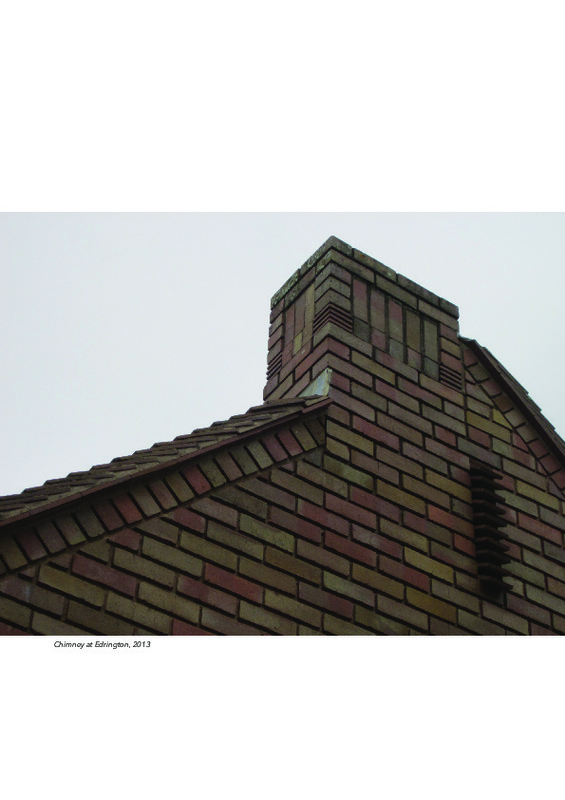JavaScript is disabled for your browser. Some features of this site may not work without it.
Buscar en RiuNet
Listar
Mi cuenta
Estadísticas
Ayuda RiuNet
Admin. UPV
Snippets from the north: Architects in Durban and their response to identity, common culture and resistance in the 1930s
Mostrar el registro sencillo del ítem
Ficheros en el ítem
| dc.contributor.author | Whelan, Debbie
|
es_ES |
| dc.date.accessioned | 2019-06-18T12:05:14Z | |
| dc.date.available | 2019-06-18T12:05:14Z | |
| dc.date.issued | 2019-06-18 | |
| dc.identifier.uri | http://hdl.handle.net/10251/122427 | |
| dc.description.abstract | [EN] Previously colonized by both Holland and Britain, South Africans have always borrowed; many taking aesthetic clues from memories of ‘home’. Applied seemingly irrelevantly, these ‘clues’ often border on the pastiche. Pre and post Union in 1910, the British-controlled colonies of Natal and the Cape absorbed imported architectural influences which not only introduced an Arts and Crafts layer to Victorian Gothic and Classical revivals, but introduced vital new ideas, namely Art Deco and Modernism.Somehow this polemic embraced another revival: a melange of Tudor and Elizabethan focusing on detail, craftsmanship and nostalgia. The ‘Tudorbethan’ Revival occurred at a vital point in the inter-war era, and it is contended that this style demonstrated a calculated resistance to the hybrid ‘Union Period’ architecture and its political role in forging a common diasporic identity and culture in the 1930s, rather than a mere application of fashion.This paper situates the Tudorbethan Revival within contemporary architectural themes in Durban, South Africa, and contextualises the socio-political production of buildings between the wars before examining the works of architects who conceived this well-crafted, nostalgic and irrelevant architecture. It concludes by comparing this complex aesthetic with the contemporary architectural thread of ‘Gwelo’ Goodman’s Cape Dutch Revival suggesting the degree to which domestic architecture is able to support political positions in contested societies. | es_ES |
| dc.language | Inglés | es_ES |
| dc.publisher | Universitat Politècnica de València | |
| dc.relation.ispartof | VITRUVIO - International Journal of Architectural Technology and Sustainability | |
| dc.rights | Reconocimiento - No comercial (by-nc) | es_ES |
| dc.subject | Tudorbethan | es_ES |
| dc.subject | Revivals | es_ES |
| dc.subject | South Africa | es_ES |
| dc.subject | Alan Woodrow | es_ES |
| dc.subject | Gwelo Goodman | es_ES |
| dc.title | Snippets from the north: Architects in Durban and their response to identity, common culture and resistance in the 1930s | es_ES |
| dc.type | Artículo | es_ES |
| dc.date.updated | 2019-06-18T11:40:45Z | |
| dc.identifier.doi | 10.4995/vitruvio-ijats.2019.11774 | |
| dc.rights.accessRights | Abierto | es_ES |
| dc.description.bibliographicCitation | Whelan, D. (2019). Snippets from the north: Architects in Durban and their response to identity, common culture and resistance in the 1930s. VITRUVIO - International Journal of Architectural Technology and Sustainability. 4(1):23-38. https://doi.org/10.4995/vitruvio-ijats.2019.11774 | es_ES |
| dc.description.accrualMethod | SWORD | es_ES |
| dc.relation.publisherversion | https://doi.org/10.4995/vitruvio-ijats.2019.11774 | es_ES |
| dc.description.upvformatpinicio | 23 | es_ES |
| dc.description.upvformatpfin | 38 | es_ES |
| dc.type.version | info:eu-repo/semantics/publishedVersion | es_ES |
| dc.description.volume | 4 | |
| dc.description.issue | 1 | |
| dc.identifier.eissn | 2444-9091 | |
| dc.description.references | Bender, B. (1998) Stonehenge- Making space. Oxford: Berg Publishers | es_ES |
| dc.description.references | Betjeman,J. (1933) Ghastly Good Taste. London: Chapman and Hall | es_ES |
| dc.description.references | Bohlin,A. (2001) Places of Longing and belonging. Memories of the Group Area Proclamation of a South African Fishing Village. In Contested Landscapes: Movement, Exile and Place, edited by B.Bender & M.Winer. Oxford: Berg Publishers | es_ES |
| dc.description.references | Judge, R. (1991) May day and Merrie England. In Folklore Vol 102:ii pp131-148. https://doi.org/10.1080/0015587X.1991.9715815 | es_ES |
| dc.description.references | Lowenthal, D. (1989) Nostalgia tells it like it wasn't. In The Imagined past: history and nostalgia, edited by C.Shaw & M.Chase. Manchester: Manchester University Press. | es_ES |
| dc.description.references | Kearney, B. (1984) A Revised listing of the important places and buildings in Durban. Durban: City Council of Durban | es_ES |
| dc.description.references | Newton-Thompson, Joyce. (1951) .Gwelo Goodman: South African artist. Cape Town: Allen & Unwin | es_ES |
| dc.description.references | Peters, W. (1981) Alan Woodrow. In Human Sciences Research Council. Dictionary of South African biography. Durban : Butterworth Press | es_ES |
| dc.description.references | Radford, D. (2002) A guide to the architecture of Durban and Pietermaritzburg. Cape Town: David Philip Publishers | es_ES |
| dc.description.references | Rowlands M, (2007) Entangled Memories and Parallel Heritages in Mali. In Reclaiming Heritage- Alternative imaginaries of memory in West Africa, edited by F.De Jong & M.Rowlands. Walnut Creek. West Coast Press | es_ES |
| dc.description.references | Saunders: C. (2007) The history of the Tongaat and Hulett Sugar Companies. Durban: Tongaat Hulett Pty.Ltd. | es_ES |
| dc.description.references | Shaw,C. & Chase,M. (1989) The Imagined Past: History and Nostalgia. Manchester: Manchester University Press. | es_ES |
| dc.description.references | Scott, D. (1994) Communal space construction: the rise and fall of Clairwood and district. University of Natal: unpublished PhD dissertation. | es_ES |
| dc.description.references | Thompson,P. (1999) The British Civic Culture of Natal South Africa 1902-1961. Howick: Brevitas Press. | es_ES |
| dc.description.references | Watson, R. (1960) Tongaati: An African Experiment. London: Hutchinson | es_ES |
| dc.description.references | Woodrow, A. Collected papers, Killie Campbell Collections, Durban MSWOO | es_ES |
| dc.description.references | Yarwood, D. (1963) The architecture of England from prehistoric times to the present day. London: Batsford | es_ES |








